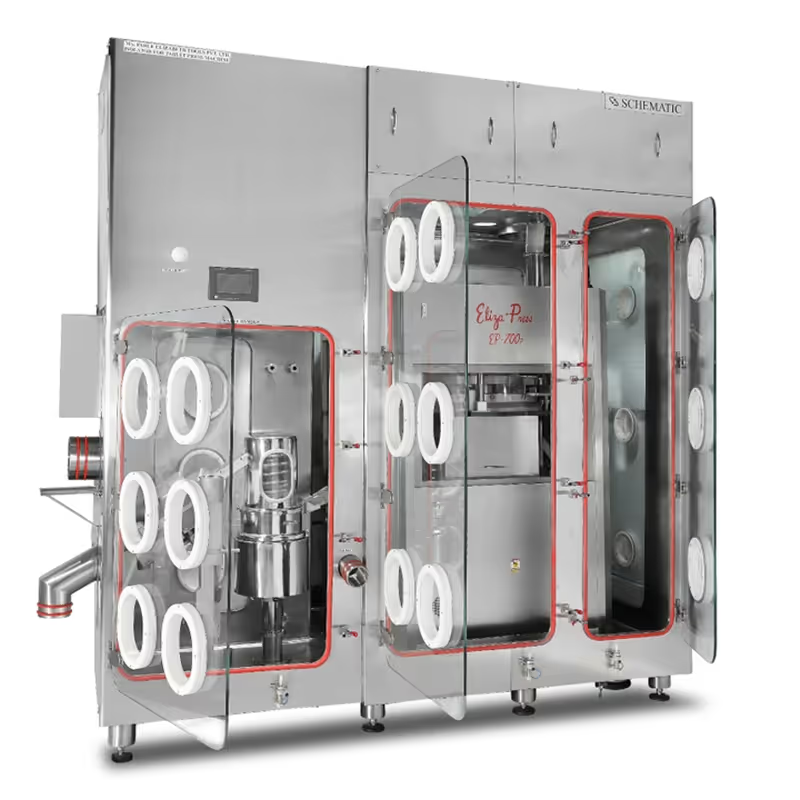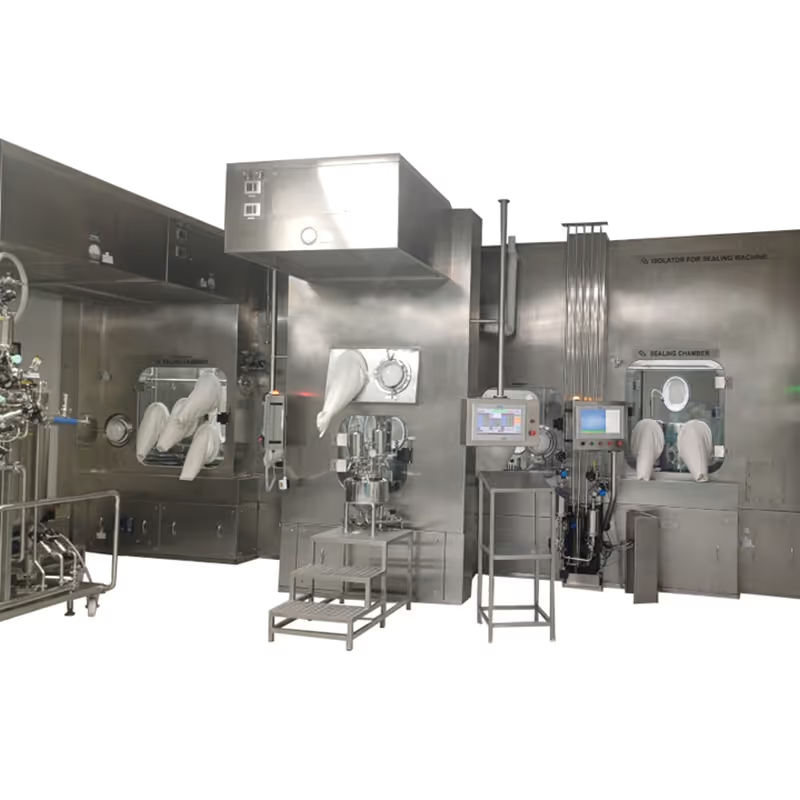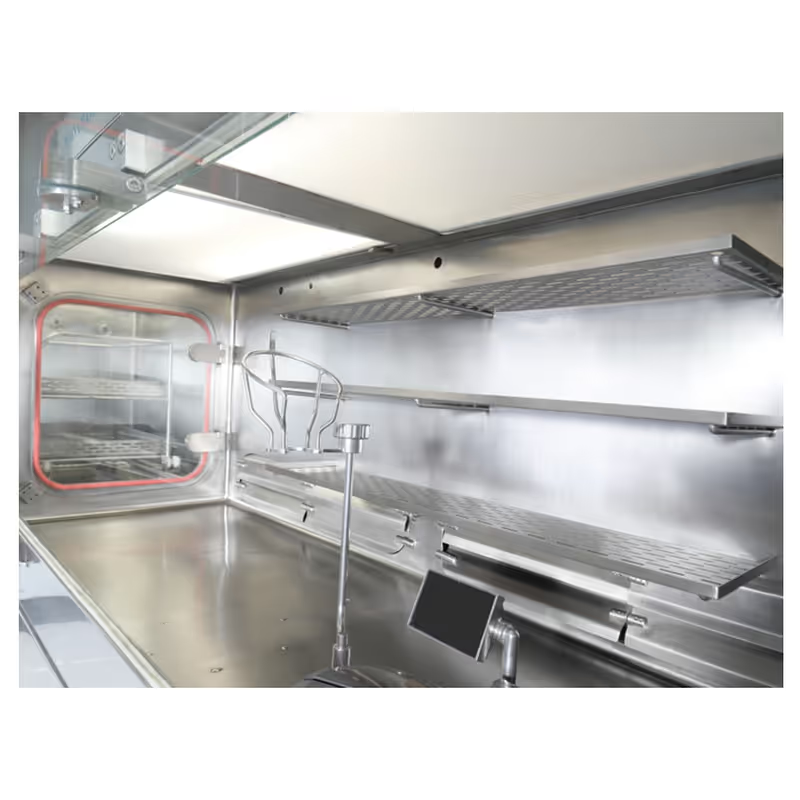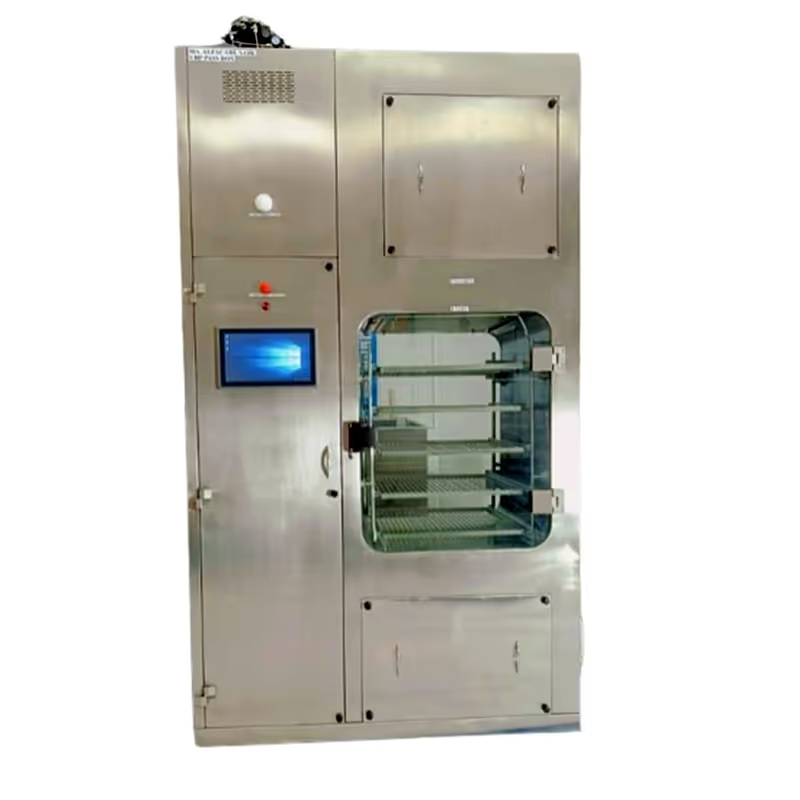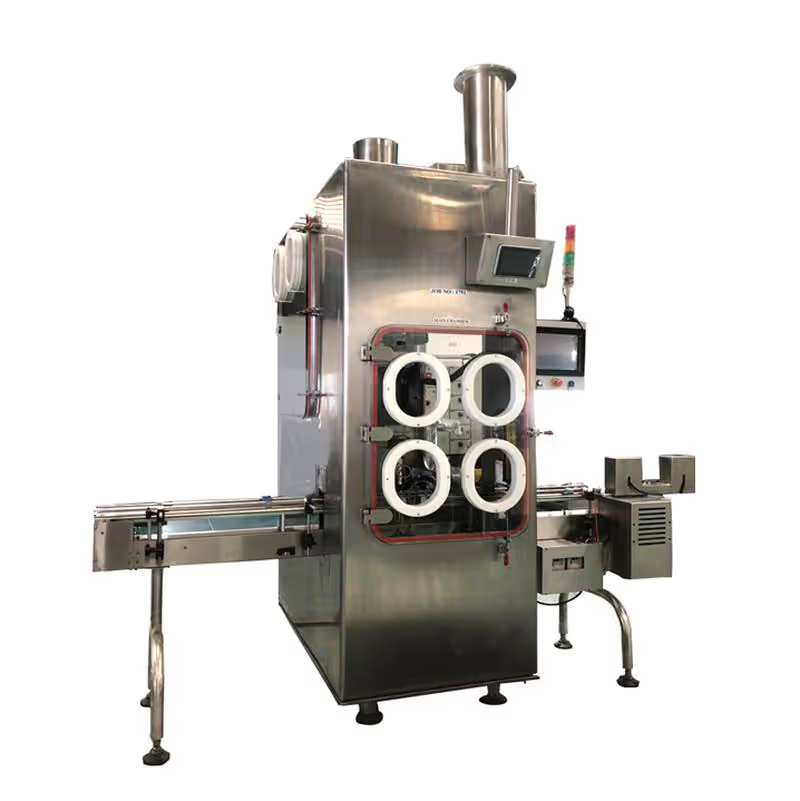Pharmaceutical: Injectables
.avif)

Injectable products (e.g. vials, syringes, prefilled devices) are manufactured under strict aseptic and sterile conditions. Key process steps and equipment include:
- Compounding / Buffer Preparation: mixing under clean conditions, sterile filtration, and controlled transfer to formulation or fill lines
- Filtration & Sterile Filtration: using membrane filters (e.g. 0.2 µm) to remove particulates and microorganisms under containment
- Filling, Sealing & Capping: sterile filling of vials or syringes, sealing or capping components in a contained environment
- Lyophilization (Freeze-Drying): freeze-drying of filled vials in a controlled chamber, often integrated with isolators
- Inspection & Sterility Testing Environments: microbiological or culture-based sterility testing performed inside test isolators
- Decontamination / Transfer Modules: isolator-based external decontamination showers, sterilant pass boxes, transfer ports for aseptic material movement
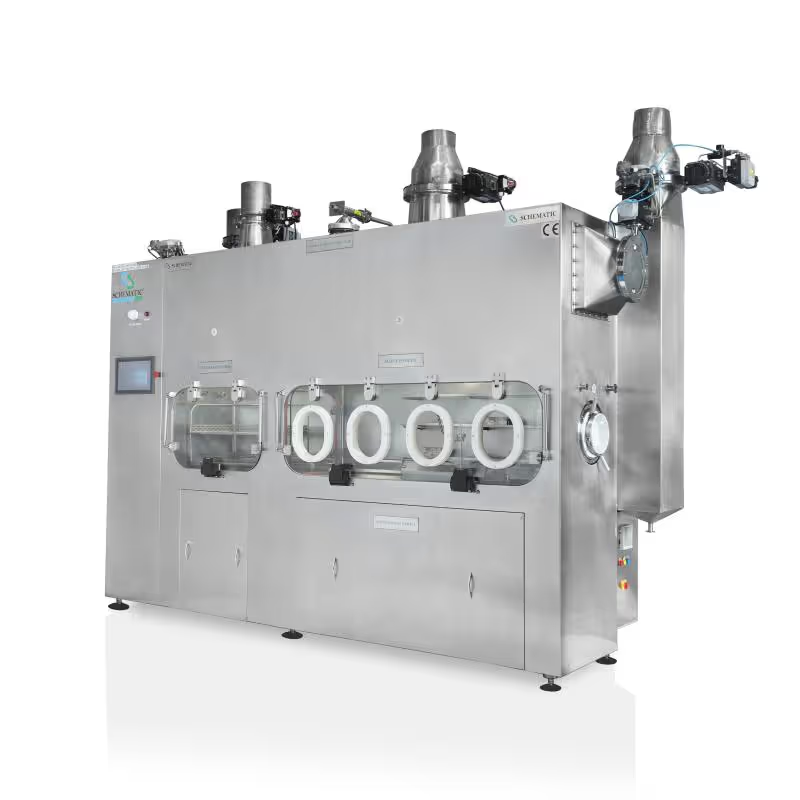
Sterile injectable manufacturing demands containment both to preserve aseptic conditions and to protect the environment and operators (especially when potent biologics or APIs are involved). Barrier isolators maintain controlled pressure differentials, HEPA / ULPA filtration, interlocked pass boxes, and safe-change filters, while enabling clean, validated workflows. Critical attributes include:
- Positive-pressure isolation (to protect product) or negative zones (for potent substances)
- Sterilizable interiors (VHP, SIP, CIP compatible)
- Safe-change filter modules and quick maintenance access
- Pass-through ports (e.g. rapid transfer ports, buffer ports) with interlock control
- Automation / PLC / HMI integration for control, alarms, and data logging
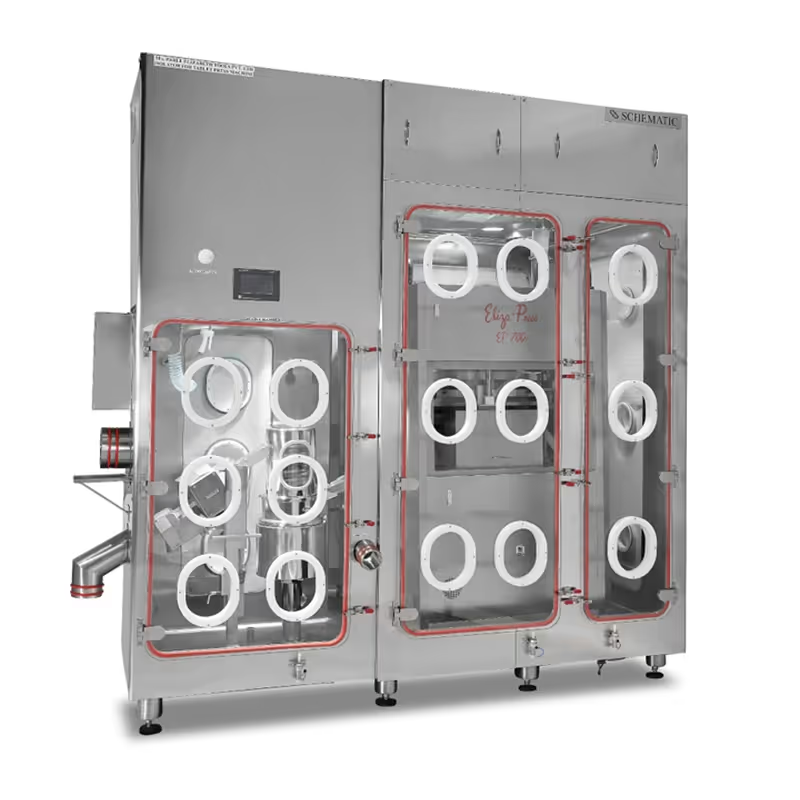
Schematic Engineering Industries offers a full spectrum of isolators and ancillary systems to support sterile and injectable operations. Their product portfolio addresses every critical stage of an injectable line. Highlighted product families include:
- Sterility Test Isolators
- Compounding Isolators
- Filtration Isolators
- Filling Line, Sealing Line, and Capping Line Isolators
- Lyophilization (Lyophilizer) Isolators
- External Decontamination / Decon Isolators
- Half-Suit solutions
- Glove-Assisted Isolators
- Smart Glove Leak Testers
- Vial Filling Line Isolators, QC and Lab Isolators, and pass-box modules
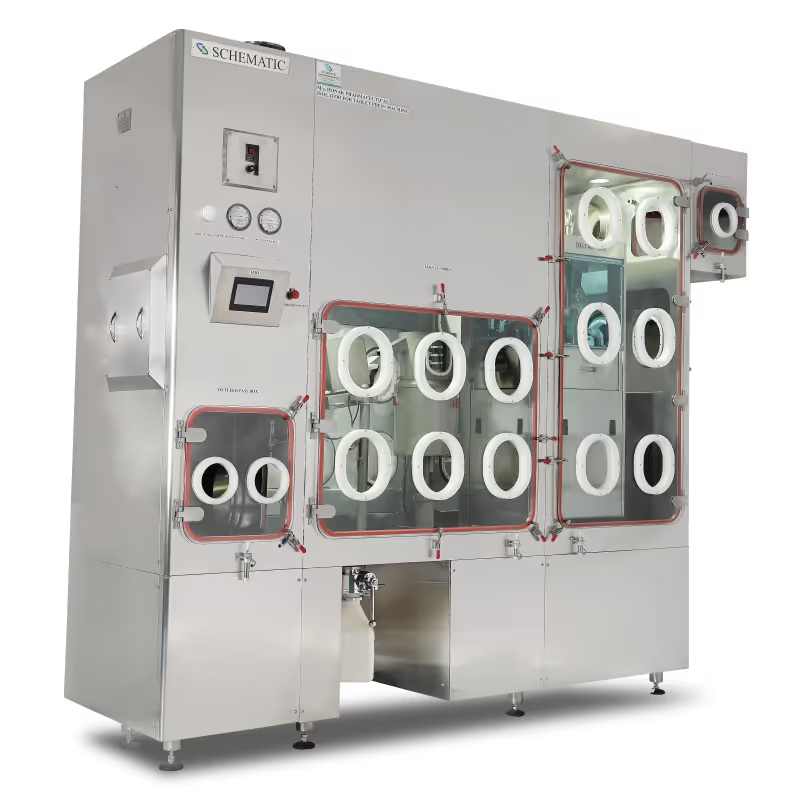
Key design features across Schematic’s injectable isolator systems include:
- Stainless steel internal surfaces with high polish, weld integrity, and hygienic design
- PLC / HMI systems with interlocks, alarm handling, and data capture
- Automated pressure testing (e.g. to ISO 10648) and safety interlocks
- Sterilizable configurations (e.g. VHP compatibility, CIP, WIP)
- Ergonomic glove port arrangements, split glove designs, and half-suit options
- Interlocked transfer ports (RTP, buffer ports) and decon showers for safe material movement
- Filter safe-change modules (HEPA/ULPA) and differential pressure monitoring
- Integration with upstream/downstream equipment (sterile filters, filling machines, lyophilizers)


